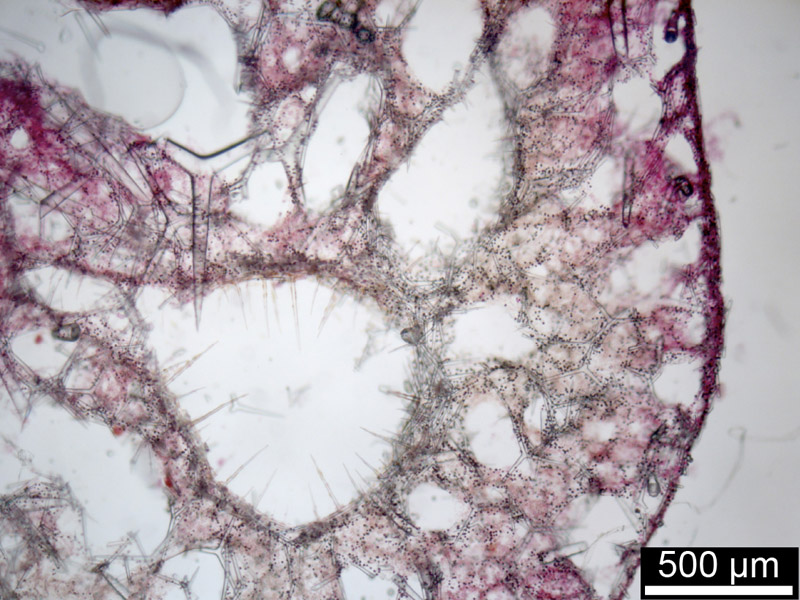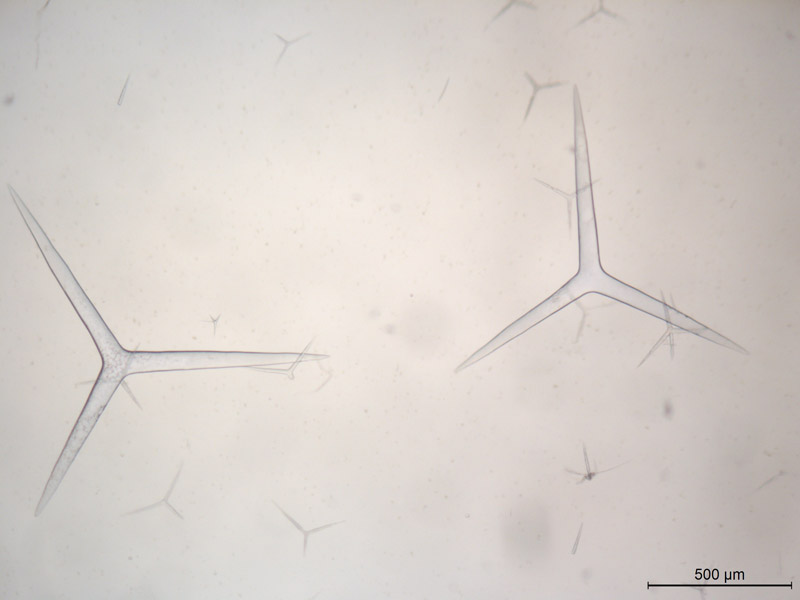Morphological description (show/hide)
| With a massive, convoluted, lamellate growth form, 3x4cm in size, and one finger-like protrusion, 1.5c m long, 0.5cm wide. | | Brownish-yellow to greenish yellow | | beige | | A few small naked osculcs without lip are scattered on ridges of the sponge and terminal on the fin ger-like protrusion, 1-2mm diameter. | | Firm, harsh | | Smooth | | The cortex is followed inwards by a prominent layer of subdermal cavities (40-200um diameter). This zone of subdermal cavities, up to 250 um thick, is the transition zone between surface and choanosome. The zone of subdermal cavities is composed of irregularly arranged, but mostly perpendicular aligned small triactines, with a few scattered large giant triaetines between. A peculiar form of small sagittal triactine and tetractine is only found in the small oscular rim. In this spicule type all three actines have the same total length, and the angles between the actines are equal, but both paired actines of the triactine (or of the basal triradiate system of the tetractine, respectively), are bent from each of their actinal center about 30¡ towards the unpaired actine. Sagittal triactines and tetractines have the same dimensions in their triradiate system, and the apical actine of the sagittal tetractine is either straight, or slightly bent at the distal end. | | A distinct dense cortex of tangential small regular triactincs is developed, with a thickness of 60-100 um . A few tangentially orientated large (giant) triactines are also present in the cortex. | | Large giant regular triactines with conical actines: 460-(705.2)-940 x 60-(120)-91.2 um. Small tiractines with conical actines: 140-(169.4)-240 x 14-(18.2)-28 um. Sagittal tetractines of exhalant canals, with more cylindrical actines and their free actine curved: 110-(143.4)-165 x 12-(14.4)-20 um. Small sagittal triactines and tetractines of the oscular rim: 70-(122.9)-160 x 10-(12.4)-16um. |
|





